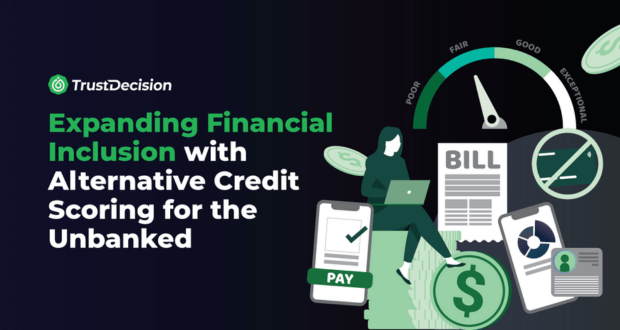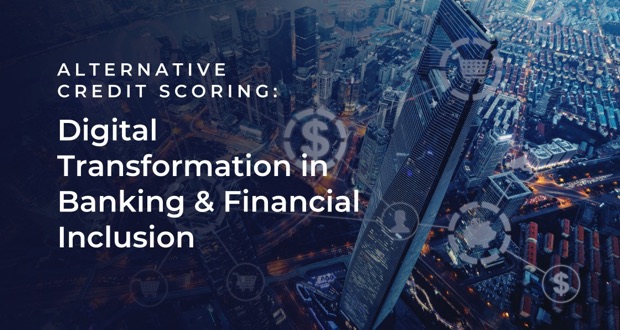Look beyond the surface; the essence of financial services is fundamentally about enhancing consumers' purchasing power, among which credit and loans stand to play a key role. Buy Now, Pay Later (BNPL), as a modern extension of credit services, has become a popular choice in recent years due to its lower to free interest payment and “soft” credit checks, which is particularly beneficial for the unbanked and underbanked populations. Recently, experts have noted a trend where BNPL is expanding beyond e-commerce and retail into lifestyle sectors, enabling people to manage unexpected or irregular expenses like travel, hostel stays, medical bills, car servicing, and back-to-school shopping.
Why People Love BNPL?
Young Millennials and Gen Z (aged 25-35), particularly from lower- to middle-income brackets, are the largest users of Buy Now, Pay Later (BNPL) services. Tech-savvy but less financially literate, they are at higher risk. This group’s tendency to buy high-value items with ease of payments drives BNPL’s appeal. Key factors include:
- Enhanced purchasing power: BNPL allows immediate acquisition without upfront payment, aligning with cautious financial habits and enabling purchases that might be delayed due to budget constraints.
- Consumer experience: BNPL offers spending autonomy and improves the shopping experience with flexible payments and personalized promotions.
As for merchants, BNPL is a strategic tool:
- Market expansion: BNPL increases brand visibility and attracts a broader customer base, including unbanked individuals, expanding market reach.
- Improved conversion and retention: BNPL enhances conversion rates as consumers are more likely to complete purchases with installment options, leading to higher customer retention.
However, BNPL faces criticism for fostering consumerism and over-consumption among less financially literate users. Competitive pressures, credit scoring challenges, and evolving regulations threaten profitability. This article will explore these challenges from a risk management perspective
Struggle for Profitability
While surging in popularity due to their consumer-friendly payment models, BNPL service providers face significant challenges in achieving profitability. The major source of profit for BNPL providers primarily comes from two key streams: merchant fees and interest income. These fees, however, are often subject to competitive pressures as numerous providers vie for merchant partnerships, leading to a downward pressure on the fees themselves. Additionally, while late payment charges contribute to revenue, relying heavily on such fees can be contentious and potentially harm customer relationships. The competitive landscape in the BNPL sector is intensifying, with numerous players entering the market, each trying to carve out a niche with unique offerings or better terms, which further squeezes profit margins.
On the other hand, high fixed costs such as operating costs (marketing expense, administrative expense, and technology expense), interest expense, credit loss, and other expenses still damage the profitability and prevent most of the BNPL providers from breaking even.

Moreover, the inherent challenges of tight profit margins are exacerbated by the costs associated with credit scoring and user onboarding. Effective credit scoring is crucial for minimizing default rates and maintaining financial health, but developing robust credit models that accurately assess the risk of new, often less credit-visible customers, such as the younger generation, can be complex. User onboarding becomes a delicate balance where the rigor of distinguishing between good and bad users is directly linked to user expansion. It's crucial not to mistakenly exclude potential good users or inadvertently allow fraudsters access.
Credit Scoring and User Onboarding Challenges
Compared to traditional credit card, BNPL executes a “soft” credit check that typically involves only KYC and recent payment history. This loose credit check leaves loopholes for fraudsters to exploit during user onboarding.
A significant number of fraud attempts occur during the initial account registration process. To effectively detect fraud at this early stage within the BNPL framework, advanced techniques beyond traditional KYC methods are necessary. These include:
- Enhanced Identity Verification: Beyond traditional Optical Character Recognition (OCR) for extracting personal details from identification documents, there is a further analysis of the devices used for registration. This includes checking if devices have been tampered with and identifying indicators of spam or bot registrations.
- Liveness Detection: This technology distinguishes a real person from any digital imitation. It combats advanced fraud tactics like the use of deepfakes or camera hijacking by requiring real-time proof of presence and authenticity, often through biometric checks that ensure interactions are not being manipulated.
- User Behavior Analysis: By monitoring how users interact with the registration interface, unusual behavior patterns such as failure to interact with optional fields and rapid completion time can be detected.
By targeting fraud at the top of the funnel, BNPL providers ensure that they focus on evaluating the creditworthiness and financial capabilities of genuine users. This evaluation is significantly enhanced through the use of alternative credit scoring.
Alternative credit data, which complements traditional credit assessments, broadens the potential customer pool by including those with limited credit histories and enhances the accuracy of creditworthiness assessments. At the same time, this approach aligns with a key objective for BNPL companies: maintaining an optimal user experience. This involves approving loans quickly without requesting excessive information from users during the onboarding process, while still gathering sufficient data insights to proceed securely with the appropriate risk management strategy. A typical alternative credit scoring process may include the following steps:
- Income verification: During which, BNPL providers will be able to get information on average income level in the last 3 months up to 3 years to predict financial capability, thus understanding borrower’s cash flow stability to meet financial obligations.
- Financial capability assessment: This goes beyond income verification to evaluate borrowers’ broader financial health, including their savings, investments, liabilities, assets and other financial behavior.
- Phone number verification: This includes authenticating the phone number provided, confirming its regular usage, and verifying the relationship between the applicant and their emergency contacts. This approach helps ensure the legitimacy of the information and guards against fraud.
- Social media detection: This method detects the phone number or email involved to verify users' social media account status, identifies any breaches associated with their phone numbers or emails, and gathers email domain information. This process also includes checking for any historical fraudulent activities associated with the user's accounts, enhancing security and fraud prevention measures.
- Joint prevention strategy: this involves analyzing credit behavior through collective data from multiple digital lending companies. This approach provides key insights such as the number of loan applications, recent loans, failed applications, frequency of overdue reminders, and ranges of overdue payments. Such comprehensive data helps develop robust credit risk assessments and enhance risk management.
Navigating the balance between rigorous credit scoring and seamless user onboarding is a key challenge for BNPL providers. It requires technology that analyzes credit data in real time, integrating robust credit assessments into the user journey without cumbersome steps. Automated decision-making tools that pull data from multiple sources ensure thorough credit evaluations while maintaining user-friendly processes, reducing friction, streamlining onboarding, and assuring user trust and satisfaction.
Regulation Landscape
Despite the growing number of BNPL merchants around the world, according to the Bank for International Settlements (2023), most BNPL credit agreements have not been covered by existing regulatory frameworks so far. However, recently, several governments have begun to revise their regulations to include BNPL services. These amendments aim to protect consumers from irresponsible lending practices that could lead to excessive debt.
Let’s take a closer look at the regulatory landscape in Asia.
In Singapore, the Monetary Authority of Singapore has endorsed a self-regulatory model for the BNPL sector. They have introduced an industry code covering essential areas such as credit evaluation, disclosure practices, marketing strategies, and the sharing of credit information. The code also imposes caps on the maximum outstanding payments that customers can maintain with each BNPL provider.
In Malaysia, the government announced this April that there will be tighter regulations for credit platforms like BNPL services under the Consumer Credit Act (CCA). This measure aims to ensure that non-bank entities, which are currently not supervised by any authorities, comply with the regulations and practices of credit provision.
In Indonesia, four months after the OJK enforced a lending ban on Akulaku's BNPL services in October 2023 due to the company's failure to comply with supervisory requirements, including risk management and good corporate governance practices, the OJK removed this restriction on February 29.
While in the Philippines, despite the strong growth of the BNPL market which is expected to reach US$2.29 billion in 2024, no regulations are currently under discussion.
As these examples illustrate, the regulatory approaches to BNPL services across Asia are diverse, reflecting varying levels of concern and regulatory philosophy. While some regions have implemented specific frameworks to manage the risks associated with BNPL, others rely on existing legal structures. This varied landscape underscores the need for both consumers and providers to stay informed and adaptable as regulatory environments continue to evolve.
A Glance into The Future
As we have seen, Buy Now, Pay Later services offer significant benefits that explain their rising popularity. For consumers, the appeal lies in the flexibility and affordability of managing payments over time without the immediate financial strain, thereby enhancing purchasing power and consumer spending. This, in turn, stimulates economic activity as businesses see increased sales volumes and broader customer engagement. Yet, the success of BNPL also hinges on responsible lending practices that protect consumers from over-indebtedness and ensure businesses conduct secure credit assessments.
The evolving regulatory landscape across different regions underscores a collective effort to balance these benefits with the risks involved. As BNPL continues to integrate into global commerce, the responsibility falls on all parties involved—regulators, providers, merchants, and consumers—to foster a financial environment that promotes both growth and consumer protection. By working together, we can ensure that BNPL contributes positively to the economy while safeguarding the financial health of consumers and the integrity of businesses.
References
Cornelli. G, Gambacorta. L, and Pancotto. L. (2023) Buy now, pay later: a cross-country analysis, Bank for International Settlement. https://www.bis.org/publ/qtrpdf/r_qt2312e.pdf
Bank Negara Malaysia (Jan 24, 2024). BNM Shariah Advisory Council's ruling on Buy Now Pay Later facility.https://www.bnm.gov.my/-/sac-ruling-bnpl
Singapore Fintech Association (May, 2023). Buy Now, Pay Later (”BNPL”), code of conduct.https://singaporefintech.org/wp-content/uploads/2023/05/BNPL-CoC-Final-170822-Code.pdf
Tech In Asia (Mar 4, 2024). OJK removes restrictions on Akulaku’s BNPL services. https://www.techinasia.com/ojk-removes-restrictions-akulakus-bnpl-services






%2520(1).png)






